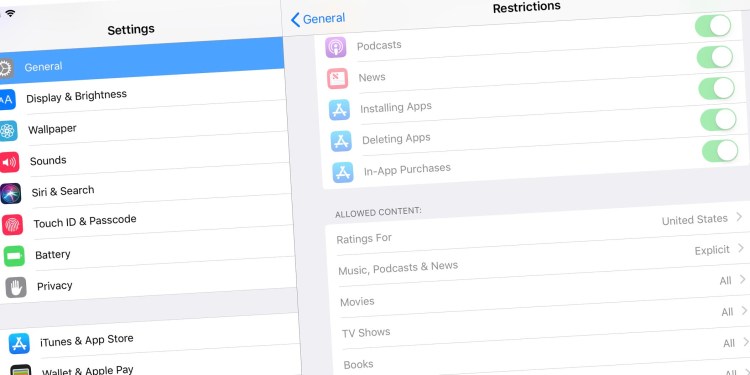Apple has a response of sorts to activist shareholders concerned about kids’ addiction to iPhones: Enhanced parental controls are coming to iOS.
Ahead of Apple’s annual shareholder meeting next month, Jana Partners and the California State Teachers’ Retirement System (CalSTRS) asked Apple this week for new software to let parents limit kids’ iPhone use, and to conduct a study on the effects of excessive phone use on mental health. With roughly $2 billion in Apple stock, Jana and CalSTRS were able to get Apple’s attention, leading the company to issue a statement reproduced in full below.
In short, Apple states that it has “always looked out for kids,” leads the industry in OS-level parental controls, and thinks “deeply about how our products are used and the impact they have.” Without providing any details or committing to the mental health study, Apple says that it has “new features and enhancements planned for the future, to add functionality and make these [parental control] tools even more robust.”
The issue of iPhone addiction — and portable device addiction in general — has been in the background for years, but recently benefited from additional attention. As noted in an earlier Reuters report, former Disney star Selena Gomez revealed that she’d canceled a tour due to depression she attributed to social media addiction, and a 2016 survey suggested that half of teenagers felt addicted to their mobile phones and were pressured to immediately respond to phone messages. The issue of how much parents should control their kids’ viewing habits — and thus their kids — has continued to percolate in popular media such as the TV show Black Mirror, without reaching a conclusive answer.
June 5th: The AI Audit in NYC
Join us next week in NYC to engage with top executive leaders, delving into strategies for auditing AI models to ensure fairness, optimal performance, and ethical compliance across diverse organizations. Secure your attendance for this exclusive invite-only event.
Enhanced parental controls are likely to offer only a partial solution to the issues raised by Jana and CalSTRS. Present iOS controls, found in the General > Restrictions section of Settings, include a collection of switches to disable web browsing, camera and FaceTime functionality, file sharing, Siri, the News app, and various types of media acquisition. Parents can also prevent iOS devices from displaying content with explicit language, sexual content, or limited by age-specific ratings across movies, TV shows, and apps.
What iOS’ parental controls do not enable are meaningful time limits or granular oversight over specific pieces of content displayed on the device. A Guided Access feature enables the device as a whole to be time-limited for accessibility or gallery purposes, but not with separate times for separate apps. Similarly, parents cannot easily screen or approve of web content that might skirt certain rules; they can either whitelist a narrow collection of sites one at a time, or blacklist “adult content.” Perhaps most importantly, stronger parental controls won’t address underlying issues such as the erosion of in-person socialization and lowering of self-esteem currently being caused in part by social media.
Any major improvement to the parental controls in iOS is unlikely to debut until at least June, when Apple holds its annual Worldwide Developers Conference, and it could come later given the company’s standard development cycles for new features. The lag also gives Apple plenty of time to undertake a mental health study for kids, should it want to.
Apple’s full statement is as follows:
Apple has always looked out for kids, and we work hard to create powerful products that inspire, entertain, and educate children while also helping parents protect them online. We lead the industry by offering intuitive parental controls built right into the operating system.
With today’s iOS devices, parents have the ability to control and restrict content including apps, movies, websites, songs and books, as well as cellular data, password settings and other features. Effectively anything a child could download or access online can be easily blocked or restricted by a parent.
We began delivering these controls for iPhone in 2008 with the introduction of the App Store, building on what we’d learned from offering similar features for the Mac a few years before iPhone was introduced. We also have a long history of curating our content platforms to make sure they are free of offensive material, such as pornography, and clearly labeled so parents can determine if an app, movie or song is age-appropriate. Of course, we are constantly looking for ways to make our experiences better. We have new features and enhancements planned for the future, to add functionality and make these tools even more robust.
We think deeply about how our products are used and the impact they have on users and the people around them. We take this responsibility very seriously and we are committed to meeting and exceeding our customers’ expectations, especially when it comes to protecting kids.

